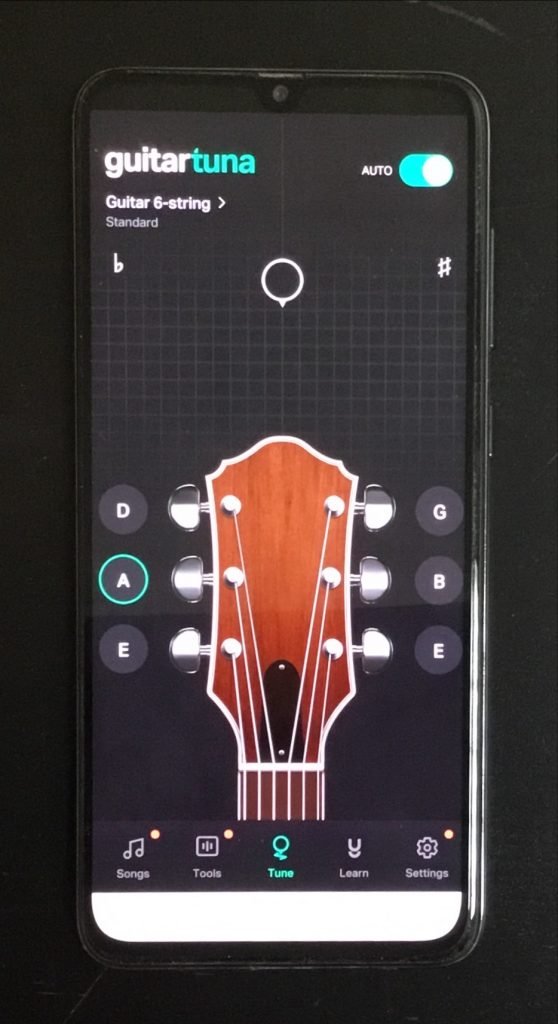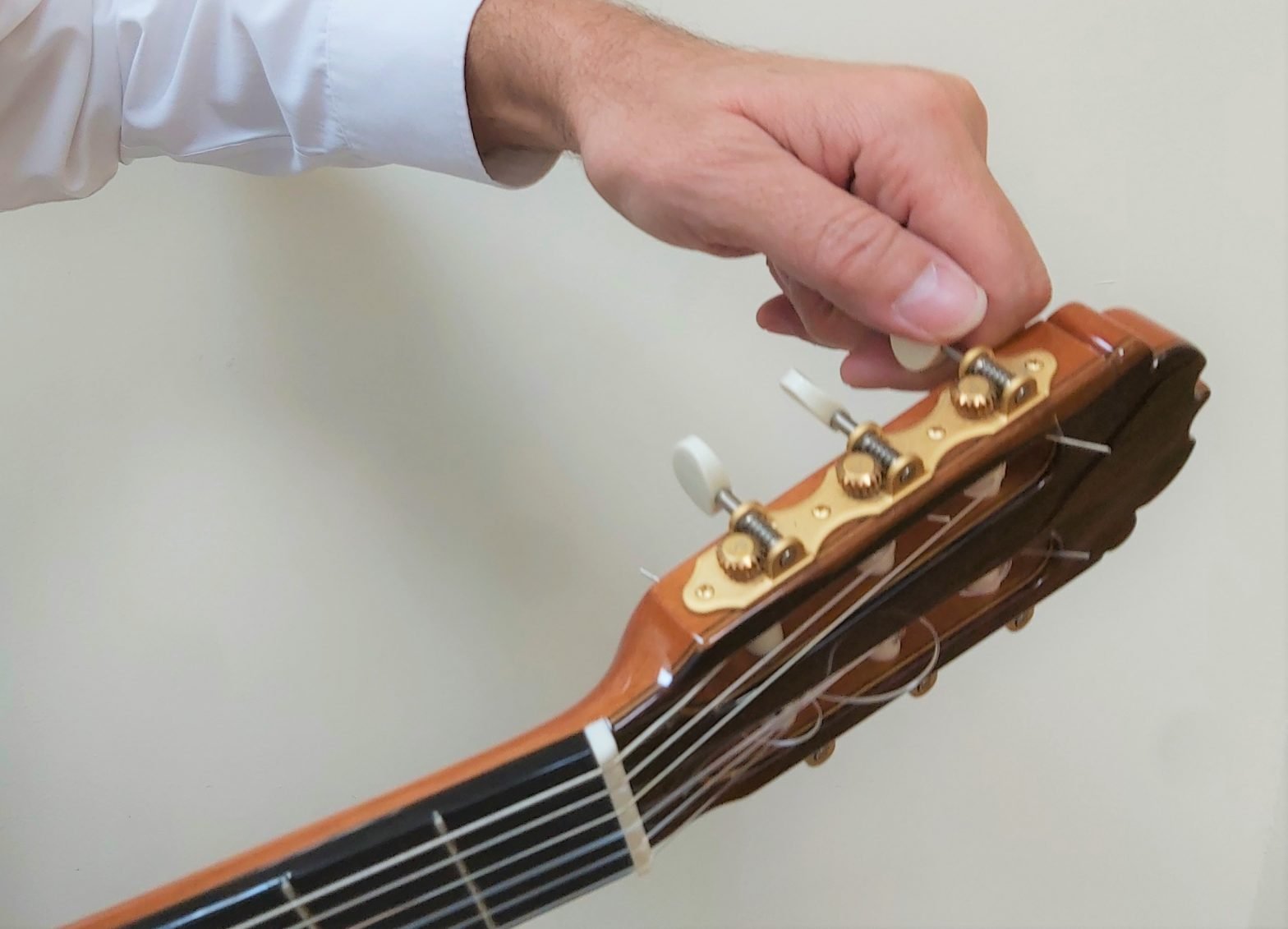The guitar, like any other stringed instrument, gets out of tune all the time, and it needs to be tuned often. In the past, the guitar players had at their disposal a tuning fork and their own musical ear to tune the guitar. Today this process has become much easier. The most popular ways today to tune your guitar are using an electronic tuner.

One of the most popular electronic tuners today, is the clip tuner (figure 1). This type tuners are really comfortable. Just clip it on the head of your guitar. It can stay there all the time, even if you are on stage. Any time you feel that your guitar is out of tune – you can tune it. One of the best examples of headstock clip tuner is
D’adario Micro Tuner

or using a tunning app or online tuner.

Regardless of the type of device you are using, the next steps are identical.
How to tune your guitar with a tuner
If you are using a digital tuner to tune your guitar, make sure that the tuner is turned on and charged. If you have a clip-on tuner, attach it tightly to the headstock of your guitar. Thus, the vibration from the strings will be easily transferred to the tuning device. If you are using an app tuner on your smartphone, make sure that there are no extraneous noises around you. Bring your smartphone as close to the guitar strings as possible.
Tuning the guitar
Turn the tuner into guitar tuning mode. Most often, the inscription “Guitar” or the letter G should light up on the scoreboard. In this mode, the tuner focuses on the standard guitar tuning E-A-D-G-B-E. Most often, tuners can only tune one string at a time, but sometimes you will find polyphonic tuners that can pick up the frequencies of all strings at the same time
Let’s consider a common case with the alternate tuning of each string. Mute all but the very first string and extract its sound. Continue to play with this string, striking about once every 10 seconds while watching the tuner. If the string is not tight enough, the arrow will deviate to the left of the desired value. An under-stretched string sounds lower than it should. Keep tightening the string until the tuner needle stops at the desired note for that string. Everything is the same, only in reverse, you need to do it when the string sounds higher than necessary. Loosen the tension on the string until it sounds right.
Usually, in addition to the alphabetic and digital indication, tuners have a color hint. When the string is tuned correctly, either the LED or the tuner screen glows green, it will glow red if the string is not tuned . Tune all strings in this way. Keep in mind that after the first tuning, the strings need enough time to stretch and reach a stable state, so the whole process have to be repeated several times.
In your guitar lessons, your teacher will teach you how to tune the guita,r not only with a digital tuner and app but also how to tune it by ear using a tuning fork or just a given note from the piano.
